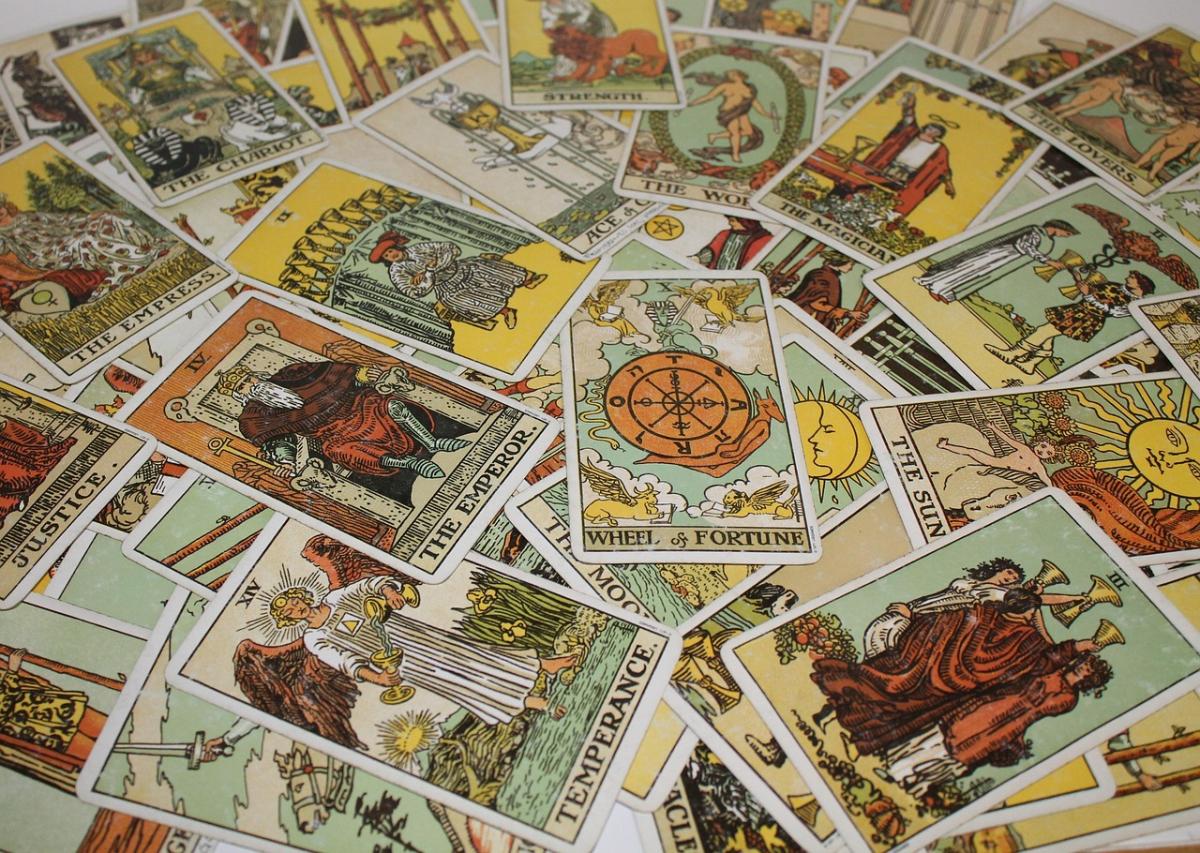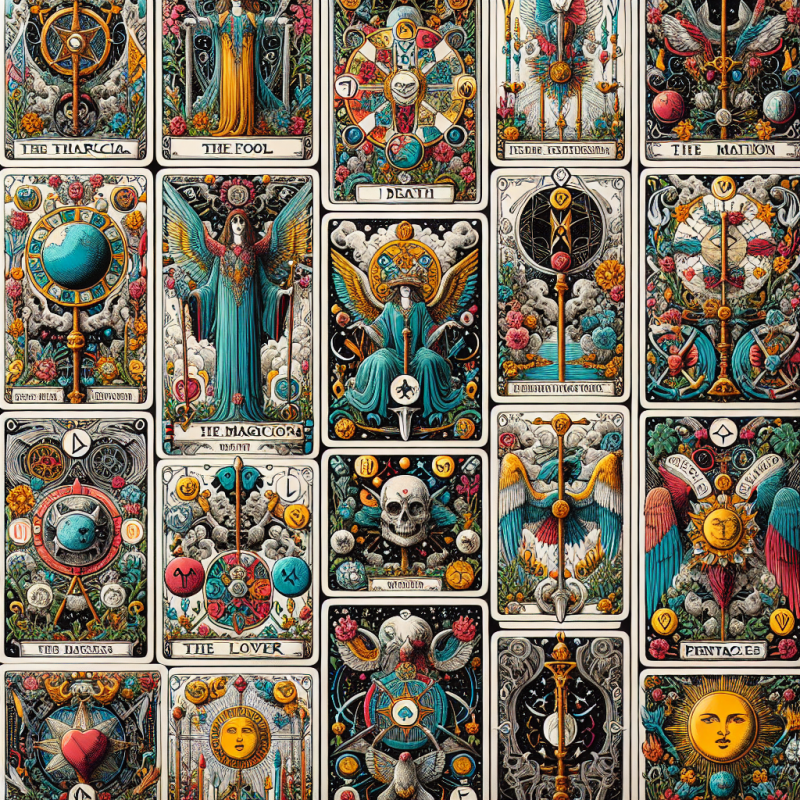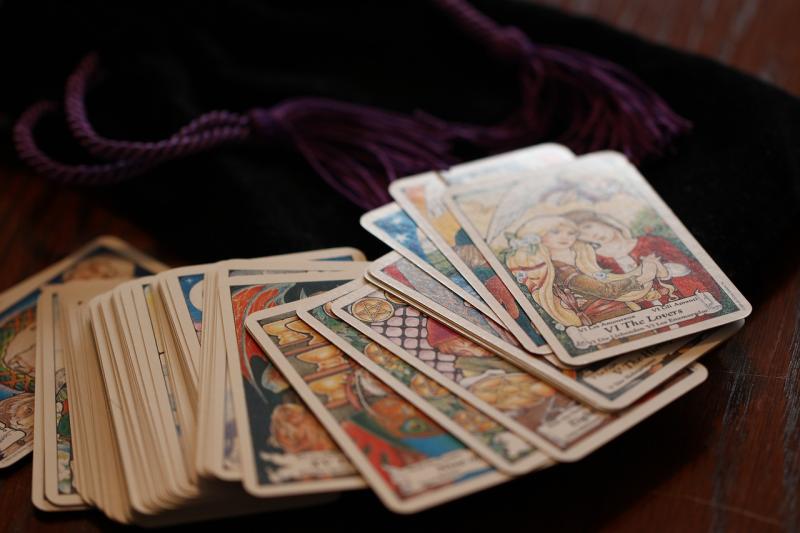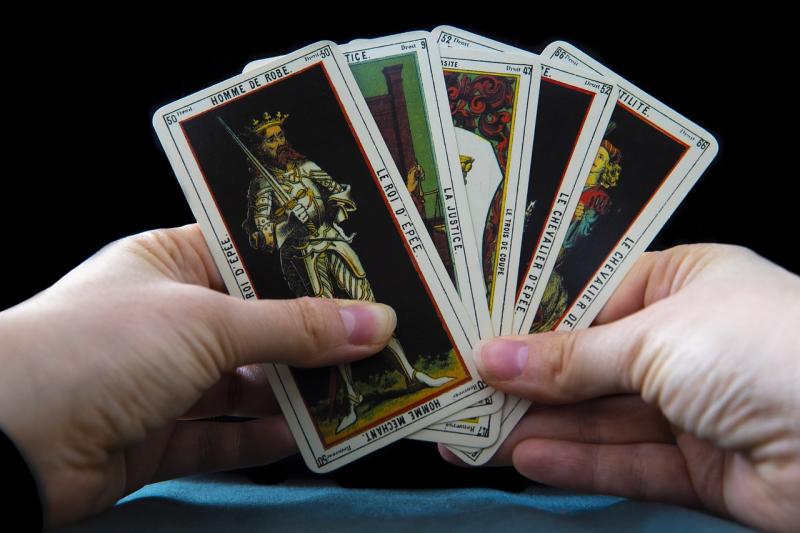I've been reading tarot cards for over two decades now—long enough to remember when people still whispered about the occult and hid their tarot card decks under floorboards or behind other esoteric books on a shelf. But whether you're using tarot to predict the future, uncover hidden truths, or simply to tap into your inner wisdom, there's no denying its lasting power as both a game and a deeply spiritual tool.
A traditional deck of tarot cards contains 78 cards, split into two major categories: the Major Arcana and the Minor Arcana. I still remember the first time I pulled The Hanged Man—an upright card for me that day—and sat in silence for nearly an hour, just meditating on what it meant to truly surrender and shift perspective. These trump cards, 22 in total, carry archetypal weight. Cards like The Fool, Judgement, The Magician, and The Hermit tap into our subconscious, acting as mirrors that reflect back our own journeys through the major thresholds of life.
The Minor Arcana, on the other hand, offers us a window into our day-to-day experiences. These 56 cards are divided into four suits—Wands, Cups, Swords, and Pentacles (sometimes called Coins or Batons, especially in historical decks like the Tarot de Marseille). Each suit corresponds to one of the four elements and deals with different facets of everyday life. Wands spark creativity and ambition; Cups speak to our emotional landscape and love life; Swords cut through mental clutter or conflict; and Pentacles ground us in the physical world—career, money, body, home.
Each suit contains ten numbered cards (Ace through Ten), and four Court Cards—Page, Knight, Queen, and King. These often represent people in a reading, or energies at play. And yes, they can show up reversed, which adds a whole layer of nuance. For instance, a reversed Queen of Cups might signal emotional overwhelm or codependency, while upright she is the picture of nurturing intuition—your classic psychic reader or clairvoyant.
When I conduct a tarot card reading, I usually begin by shuffling the deck of cards slowly, intentionally. It’s a kind of ritual, a moment to breathe and let go, and to ask my spirit guides to help channel what the seeker needs. Whether I’m laying out a Celtic Cross, a simple three card spread for past, present, future, or even a one card pull for daily guidance, each card spread tells a story that needs to be interpreted with care, experience, and yes, intuition.
Over the years, I’ve studied not just tarot but astrology, numerology, the kabbalah, and the Golden Dawn system to deepen my understanding. The Rider-Waite-Smith deck—with its rich symbolic illustrations by Pamela Colman Smith—remains one of my go-tos, but I’ve also worked with the Thoth Tarot, oracle cards, and even Egyptian and Renaissance-inspired card decks. I tell beginners this all the time: you don’t need to know every bit of theory to start. The tarot and oracle journey is about discovering how the cards speak to how you feel, what’s unfolding in your life, and how you can grow.
And no, you don’t have to be a psychic or a mystic to get something meaningful from a free tarot reading. Whether you’re consulting a psychic tarot professional, trying a free online pull, or reading for yourself with a new deck and a guidebook, what matters most is your openness to hear what’s truly there. Sometimes the cards affirm what you already know. Other times, they challenge you to let go, to lean into the mysteries, to sit with uncomfortable truths.
Some skeptics still see tarot as a parlor trick or just a fancy pack of playing cards, but I’ve seen too many moments of clarity—tears, laughter, transformation—to dismiss its value. I once read for a woman going through a painful past life regression, and the Death card came up—not to predict tragedy, but to signal a moment of transformation and rebirth. It was exactly what she needed to see. I’ve used tarot spreads to uncover blocks in chakras, to guide people through breakups, and even to illuminate paths in their career or spirituality.
My approach is part hermetic, part intuitive, part conversational. I believe in the allegorical power of the cards—the way they invite us to reflect, to meditate, to reclaim our power and agency. Each card is a piece of a story, a prompt, a vision. It’s not about giving away your fate to a fortune teller; it’s about reconnecting to your higher self and consciousness. Tarot is a dialogue, not a prescription.
So whether you're a Capricorn who wants to understand your horoscope, or an Aquarius drawn to psychic readings, or simply curious to learn to read cards for yourself, know this: tarot meets you where you are. It’s not about perfection. It’s about presence.
You don’t need to be gifted, but you do need to be compassionate, curious, and open to what lies beneath the surface. In the end, that’s what this work is about: not just reading cards, but reading life itself.



